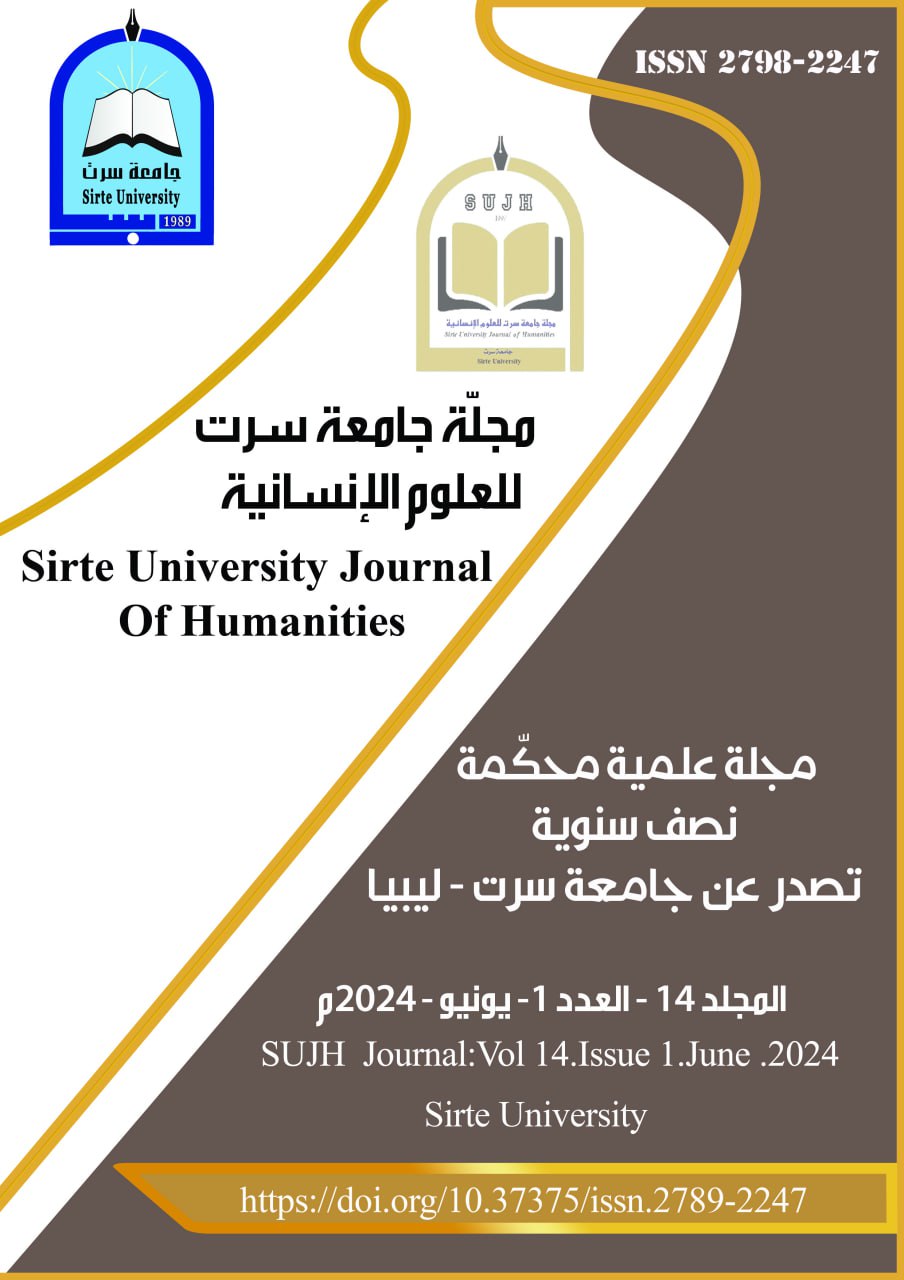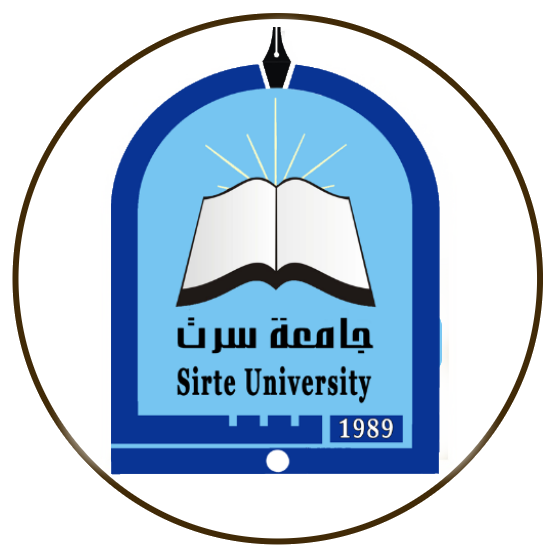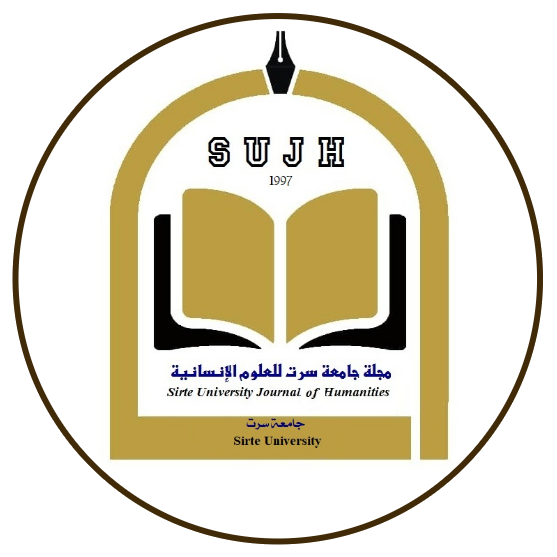Multimodality Approach in Translation Training: The Use of the Three audiovisual (AV) Modes (Standard, Bimodal and no-subtitling) in Interpretation Teaching for EFL classroom
DOI:
https://doi.org/10.37375/sujh.v14i1.2792الكلمات المفتاحية:
الترجمة السمعية البصرية AVT، ثنائية الوسيط، تعدد الوسائط، اكتساب المفرداتالملخص
ستكشف هذه الورقة البحثية تأثير انماط الترجمة السمعية البصرية (AVT) المختلفة: (الترجمة المكتوبة القياسية و الترجمة المكتوبة ثنائية الوسيط و عدم استخدام الترجمة) على الاكتساب العرضي للمفردات متعلمي اللغة الثانية ((L2. تستخدم الدراسة المنهجية نهجا كميا و نوعيا وتتضمن الدراسة 33 طالب من متعلمي اللغة الإنجليزية كلغة أجنبية (EFL) المتخصصين في الترجمة، والذين درسوا لمدة عامين على الأقل في مجال الترجمة. تم توزيع المشاركين بشكل عشوائي إلى ثلاث مجموعات تجريبية: (أ) ترجمة الأفلام القياسية، (ب) ترجمة الأفلام ثنائية الوسيط، و (جـ) بدون ترجمة. شاهدوا مقطعًا من 20 دقيقة من الفيلم الرسوم المتحركة "Big Hero 6" ، ثم أكملوا ثلاثة اختبارات بعدية لتقييم اكتساب المفردات لديهم: اختبار التعرف على شكل الكلمة، واختيار من متعدد، واختبار معنى الترجمة، وكان كل اختبار يحتوي على 15 عنصرًا، مع منح نقطة واحدة لكل إجابة صحيحة. أُعطي المشاركون 60 دقيقة لإكمال جميع الاختبارات الثلاثة، بواقع 20 دقيقة لكل اختبار. قارنت الدراسة أداء المشاركين عبر الحالات التجريبية الثلاث، ثم حسبت المتوسطات لكل اختبار بعدي في ظل ظروف الترجمة الفورية المختلفة. تشير النتائج إلى أن الترجمة الفورية الثنائية الوسط، والتي تجمع بين العناصر البصرية والسمعية باللغة نفسها، تحقق أعلى درجات في التعرف على أشكال الكلمات. كما أن الترجمة الفورية القياسية، والتي تعرض معاني المفردات باللغة العربية على الشاشة، تظهر أيضًا مستوى مرضٍ من الأداء في استرجاع المفردات. وعلى النقيض من ذلك، تؤدي حالة عدم وجود ترجمة فورية إلى أدنى الدرجات، مما يشير إلى أهمية الترجمة في تعزيز الفهم واكتساب المفردات.
المراجع
References
-Allan, Margaret. (1985). Teaching English with video: Vol. Longman handbooks for language teachers. Longman.
- Baltova, I. (1999). Multisensory language teaching in a multidimensionalcurriculum: The use of authentic bimodal video in core French. Canadian Modern Language Review, 56(1), 32-48. doi: 10.3138/cmlr.56.1.31
- Bravo, C. (2008). Putting the reader in the picture: screen translation and foreign-language learning [Doctoral thesis, Universitat Rovira i Virgili]. Retrieved from
http://www.tesisenred.net/handle/10803/8771.
- Caimi, A. (2015). Introduction. In Y. Gambier, A. Caimi & C. Mariotti (Eds.), Subtitles and language learning (9-18), Peter Lang.
- Cary, E. (1969). La traduction totale. Babel, 6(3), 110-115.
- Chaume, F. (2004). Film Studies and Translation Studies: Two Disciplines at Stake in Audiovisual Translation. Meta, 49(1), 12-24.
Claire Clivaz and Martial Sankar (2016). Multimodal Literacies. Version 1.0.0. DARIAH Teach. [Training module]. https://teach.dariah.eu/course/view.php?id=24§ion=0
- Díaz Cintas, J. (2003). Teoría y práctica de la subtitulación inglés - español. Barcelona: Ariel.
-Díaz Cintas, J., & Remael, A. (2007). Audiovisual translation: Subtitling. Manchester: St. Jerome Pub.
- d'Ydewalle, G., & Pavakanun, U. (1997). Could enjoying a movie lead to language acquisition. In P. Winterhoff-Spurk & T.H.A. van der Voort (Eds.), New horizons in media psychology: Research cooperation and projects in Europe 145-155. Opladen, Germany: Westdeutscher Verlag.
- d' Ydewalle, G., Praet, C., Verfaillie, K., & van Rensbergen, J. (1991). Watching subtitled television: Automatic reading behavior. Communication Research, 18, 650-666.
- Etemadi, A. (2012). Effect of Bimodal Subtitling of English Movie on Content Comprehension and Vocabulary Recognition. International Journal of English Linguistics, 2(1), February 2012.
- Guichon, N. & McLornan, S. (2008). The effects of multimodality on L2 learners: Implications for CALL resource design. System, 36(1), 85-93.
- Jaber, R. & Dollar, Y. (2019). A meta-analysis of the effect of bimodal subtitling on vocabulary learning among adult EFL learners. Focus on ELT Journal (FELT), 1(1), 43-52. https://doi.org/10.14744/felt.2019.00001.(2019)
- Jewitt, C., Bezemer, J., & O'Halloran, K. (2016). Introducing multimodality (1st ed.). Routledge. https://doi.org/10.4324/9781315638027
- Karamitroglou, F. (2000). Towards a Methodology for the Investigation of Norms in Audiovisual Translation: The Choice Between Subtitling and Revoicing in Greece. Amsterdam and Atlanta: Rodopi.
- Karimah, H. (2019). The use of standard and bimodal subtitles to facilitate students; vocabulary development [UnPublished Doctoral thesis].
- Kelly, L. (1979). The True Interpreter: A History of Translation Theory and Practice in the West. Oxford: Blackwell.
Lertola, J. (2013). Subtitling new media: Audiovisual translation and second language vocabulary acquisition [Doctoral thesis, University of Galway].
- Li, B. (2020). Language Quest. Journal of the School of Chinese Language and Literature of Nanjing Normal University, (4), 189.
- Lohani, S. (2019). The history of multimodal composition, its implementation, and
challenges. The Criterion: An International Journal in English,10 (1), 118-130.
- Nunan, D. (2004). Task-based language teaching: A comprehensively revised edition of designing tasks for the communicative classroom. United Kingdom, Cambridge, Cambridge University Press.
- O'Connell, E. (2007). Screen Translation. In P. Kuhiwczak & K. Littau (Eds.), A Companion to Translation Studies 120-133. Clevedon: Multilingual Matters.
- Pérez González, L. (2009). Audiovisual Translation. In M. Baker Gamp, & Saldanha (Eds.), Routledge Encyclopedia of Translation Studies 13-20. London and New York: Routledge: Peter Lang.
- Quirk, T. (2012). Writers should not fear jargon. Nature, 487, 407. doi: 10.1038/487407a.
- Read, J. (2004). Research in teaching vocabulary. Annual Review of Applied Linguistics, 24, 146-161.
- Seidlhofer, B. (2003). A concept of International English and related issues: From;Real English; to;Realistic English. Council of Europe. Strasbourg.
- Serafini, F. (2014). Reading the visual: An introduction to teaching multimodal literacy. Teachers College Press.
- Talaván, N. (2010). Subtitling as a task and subtitles as support: Pedagogical applications. In J. Díaz Cintas, A. Matamala, & J. Neves (Eds.), New insights into audiovisual translation and media accessibility 285-299. Rodopi.
- Tschirner, E. (2001). Language acquisition in the classroom: The role of digital video. Computer Assisted Language Learning, 14(3–4), 305–319.
- Zabalbeascoa, P. (1997). Dubbing and the nonverbal dimension of translation. In Poyatos Nonverbal Communication and Translation (Ed.), 327-342. DOI:10.1075/btl.17.26zab.
- Zarei, A. (2009). The effect of bimodal, standard, and reversed subtitling on L2 vocabulary recognition and recall. Pazhuhesh-e Zabanha-ye Khareji, 49, 65-84.
- Waring, R., & Takaki, M. (2001). At what rate do learners learn and retain new vocabulary from reading a graded reader? Reading in a Foreign Language, 15(2), 130-163.
- Grignon, P. M. Lavaur, J & Blanc, N. (2005). The effect of subtitles on film understanding. Retrieved (2010) from: http://www.google.com/search?hl=en+q=the+effect+of+subtitles+on+film+understnding+b+nG=google+search
- Koolstra, C. M., & Beentjes, W. (1999). Children's vocabulary acquisition in a foreign language through watching subtitled television programs at home. Journal of Psycholinguistic Research, 47, 52-60.











